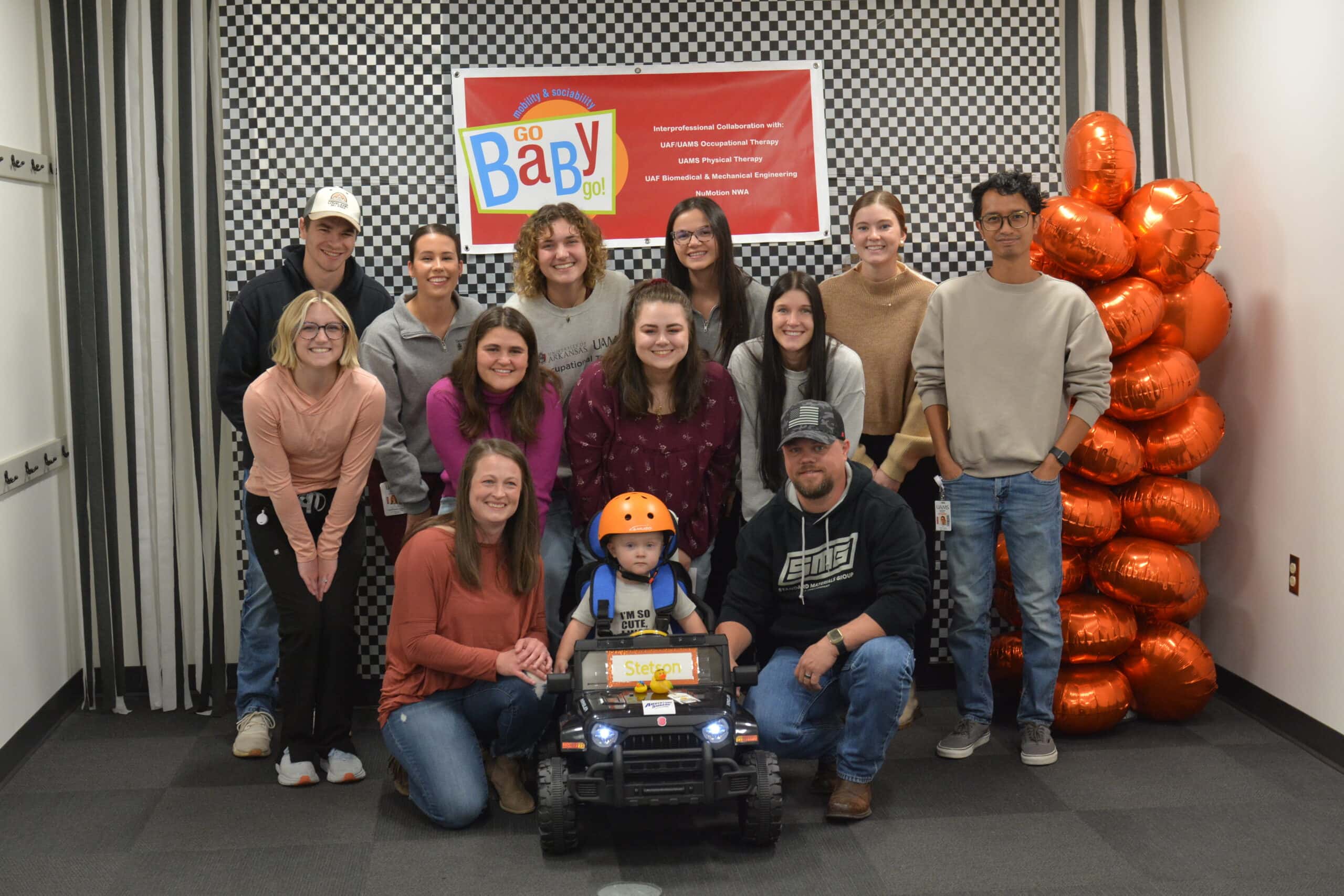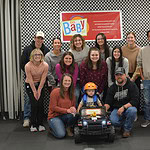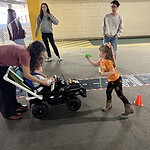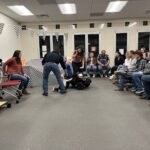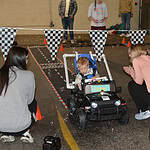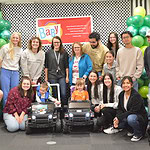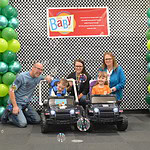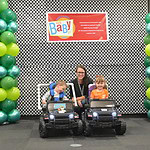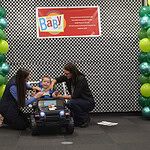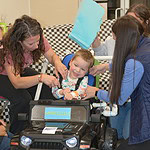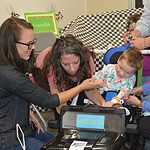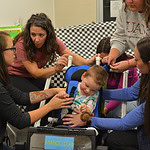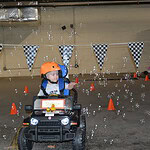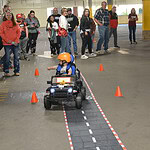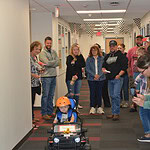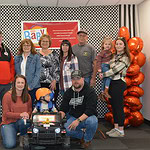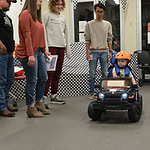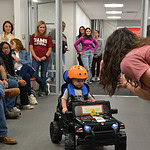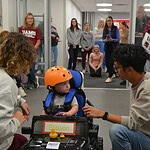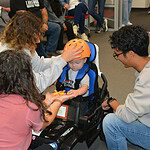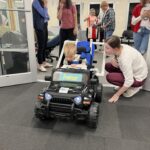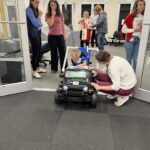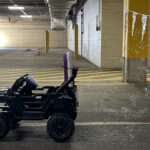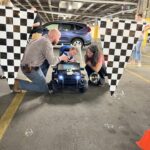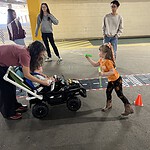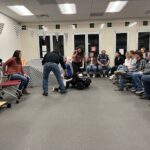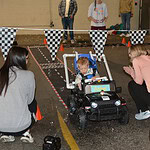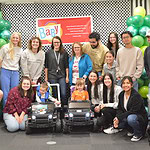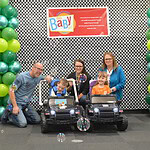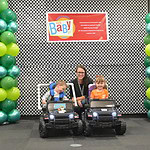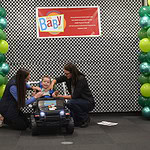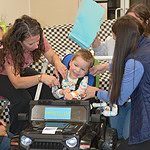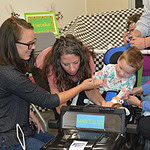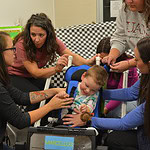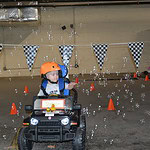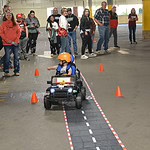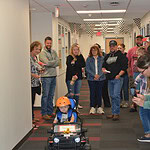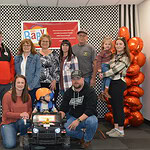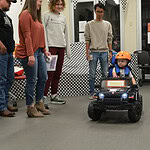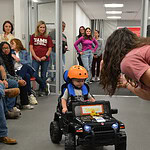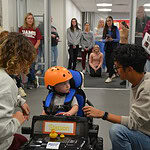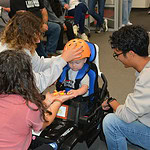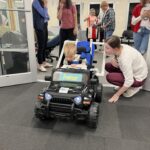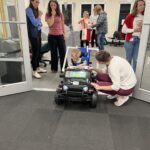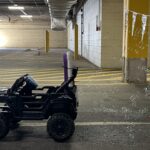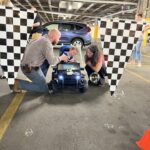UAMS and UA Distribute Electric Ride-On Cars to GoBabyGo Families in Northwest Arkansas
| LITTLE ROCK — The University of Arkansas for Medical Sciences (UAMS) and the University of Arkansas (UA) today distributed electric ride-on cars to families participating in GoBabyGo, a national program that promotes the use of modified electric ride-on cars as a solution for independent mobility during early childhood.
The event is part of the capstone project of Brenna Ramirez, a UAMS/UA occupational therapy doctoral student whose goal was to make Northwest Arkansas a GoBabyGo branch. UA faculty member Amanda Troillett, OTD, is overseeing the project.
GoBabyGo has formally recognized 25 branches in the United States, with the closest branches to Northwest Arkansas being in Lincoln, Nebraska, and St. Louis. This means that local families seeking GoBabyGo aid were being referred to branches over 300 miles away.
“There are currently no commercially available devices designed specifically for independent mobility,” Ramirez said, “but the prevalence of modifying electric ride-on cars is growing as one relatively low-cost method of promoting independent mobility during early childhood.”
GoBabyGo is unique in its distribution of devices, in that each electric ride-on car is modified to meet the individual needs of the rider. GoBabyGo facilitates training workshops to educate practitioners on how to modify the vehicles to promote independent mobility.
To prepare for today’s distribution of the electric ride-on cars, three participating children and their families recently completed an assessment on each child’s specific needs so the cars could be customized for each child. The assessments and modifications of the ride-on cars were conducted by faculty, clinicians and students in the UAMS/UA Occupational Therapy program, UAMS Physical Therapy program, the UA College of Engineering, and the UA Biomedical Engineering Department.
Common modifications include converting a steering wheel drive to a joystick drive, adding switches and creating PVC exoskeletons.
The prevalence of childhood disability has been on an upward trajectory since the mid-1900s, along with the need for assistive devices. According to the Centers for Disease Control and Prevention (CDC), roughly 17% of children in the United States are diagnosed with a developmental disability, which translates to nearly 120,000 children in Arkansas.
Children with decreased environmental engagement are at risk of decreased opportunities for play, social participation and skill development, which puts children with mobility impairment at risk for delayed acquisition of developmental milestones.
“As the population of Northwest Arkansas grows, so will the number of children with disabilities, including mobility impairment,” Troillett said. GoBabyGo provides opportunities for UAMS and UA students to practice innovation and collaboration within the community. The UAMS/UA Occupational Therapy Doctoral Program was founded on these principles, and this is one of the many reasons why we are passionate about bringing GoBabyGo to our community.”
UAMS is the state’s only health sciences university, with colleges of Medicine, Nursing, Pharmacy, Health Professions and Public Health; a graduate school; a hospital; a main campus in Little Rock; a Northwest Arkansas regional campus in Fayetteville; a statewide network of regional campuses; and eight institutes: the Winthrop P. Rockefeller Cancer Institute, Jackson T. Stephens Spine & Neurosciences Institute, Harvey & Bernice Jones Eye Institute, Psychiatric Research Institute, Donald W. Reynolds Institute on Aging, Translational Research Institute, Institute for Digital Health & Innovation and the Institute for Community Health Innovation. UAMS includes UAMS Health, a statewide health system that encompasses all of UAMS’ clinical enterprise. UAMS is the only adult Level 1 trauma center in the state. UAMS has 3,485 students, 915 medical residents and fellows, and seven dental residents. It is the state’s largest public employer with more than 11,000 employees, including 1,200 physicians who provide care to patients at UAMS, its regional campuses, Arkansas Children’s, the VA Medical Center and Baptist Health. Visit www.uams.edu or uamshealth.com. Find us on Facebook, X (formerly Twitter), YouTube or Instagram.
###
